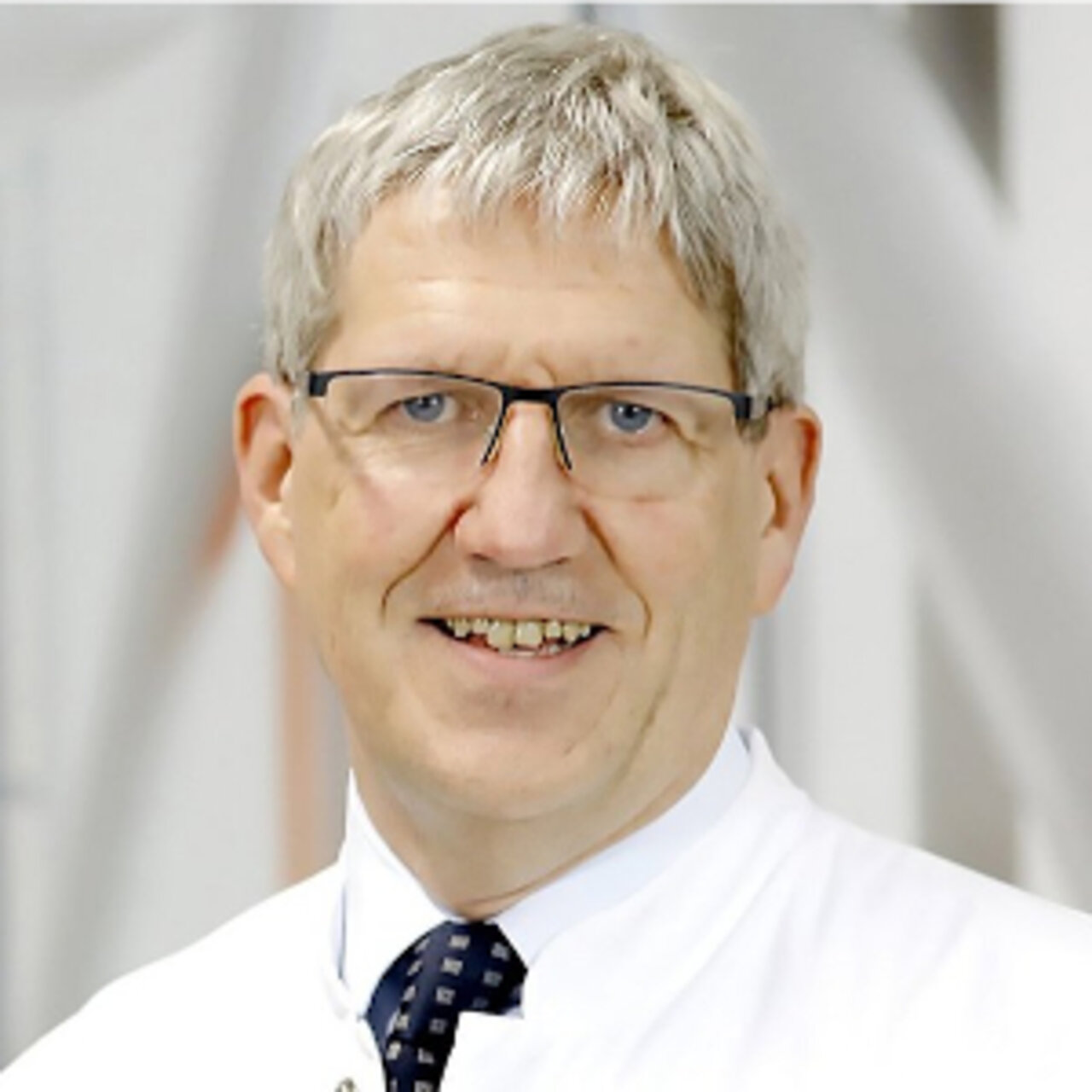Specialists in Lung operation
4 Specialists found
Information About the Field of Lung operation
What kind of operations can be performed on the lungs?
There are two lungs in the human body, each divided into lobes and segments. The lungs are situated in the thoracic cavity and enclosed by the so-called pleura. Operations of the lungs belong to the field of thoracic surgery and can be carried out for both therapeutic as well as diagnostic purposes for a variety of lung conditions. Among these are cancers of the lung or pleura as well as metastases, which are tumors that have spread to the lung from distant tumors. In addition, hyperinflated lung tissue (due to COPD), traumatic injuries, chronic pneumonia and a wide range of other disorders can also require surgery.
Indications for lung operations
- Lung tumor surgery
Lung tumors are neoplasms of the lung tissue which can be benign or malignant. Benign pulmonary nodules are the most common type of benign tumor and in most patients do not cause any symptoms, instead they tend to be found by chance during examinations performed for other reasons. Normally, these types of tissue abnormalities do not need to be surgically removed. However, this is not the case with malignant tumors, in other words lung cancer. The most common form is referred to as bronchioloalveolar carcinoma, which is mainly caused by smoking and affects men more often than women. Symptoms include shortness of breath, hoarseness, loss of appetite and coughing up blood. A number of therapies are effective for bronchioloalveolar carcinomas and in addition to chemo- and radiotherapy, surgery too is of great significance. But whether the tumor is operable depends on the histological analysis of the tumor tissue as well as the tumor stage, the individual health status and other factors. For some stages, surgical resection of the lung tumor has promising potential.
Lung surgery for metastases
Metastases of the lung, which are malignant tumors which do not originate from lung tissue but have invaded the lungs from distant cancers, occur even more frequently than bronchioloalveolar carcinomas. The primary source can be pancreatic or testicular cancer or many other types. As patients often experience the symptoms late, metastases to the lungs may go unnoticed for a long time. Once again, surgically removing the tumors is a treatment option, however, the possibility of performing this procedure is dependent on a number of factors. The organ of origin of the cancer, the patient's health and also the stage of cancer are of importance.
Lung surgery for COPD
COPD (chronic obstructive pulmonary disease) is an umbrella term for a number of lung diseases that all share a chronically decreased lung ventilation and thus compromised breathing. A permanently reduced lung function that is not entirely reversible is a characteristic feature of COPD. While smoking constitutes the most common cause, COPD can also stem from polluted air or chronic respiratory infections. The main symptoms are chronic cough as well as shortness of breath, particularly triggered by physical activity. There are many therapy options, but first of all, patients have to prophylactically eliminate all risk factors. Both medications as well as surgical management are possible. Once conservative measures have been tried without success, overinflated lung parts (emphysemas) can be resected surgically by bullectomy. Emphysemas lead to a progression of COPD and worsen the symptoms like shortness of breath. Furthermore, surgical volume reduction can reduce symptoms, as lung areas that no longer bear any function are separated from ventilation by placing valves in the respective spots. This makes the mechanical ventilation by pleura and diaphragm more efficient. If COPD progresses to late stages, lung transplants are the only option.
Methods and procedures
Minimally-invasive lung surgery
VATS (video-assisted thoracoscopic surgery) is a minimally-invasive approach to both diagnostic as well as therapeutic procedures for organ disorders within the thoracic cage, especially the lungs. VATS makes use of surgical staplers which can cut tissue and safely seal it at the same time. This reduces bleeding and makes sure that the tubes of the lung are closed airtight.
Several small skin incisions measuring 3-5 cm are the first step of the procedure. These openings are needed to introduce the camera as well as specialized endoscopic instruments into the thoracic cavity. The high resolution camera sends live images to a screen, on which the surgeon can follow the procedure in real time and magnified. This functions like a magnifying glass and makes it possible to operate on a very precise level, as all the structures are shown in detail. Now, the stapler is used to resect the pathological tissue step by step. Also adjacent and regional lymph nodes are resected. Once the pathological lung tissue has been removed, it can be collected with a plastic bag and be removed through one of the skin incisions. The length of the operations depends on the extent as well as the localization of the pathological tissue and the patient’s health status plays a role, too.
Endoscopic lung operation
Endoscopic lung surgery involves introducing a high resolution camera and specialized instruments via mouth and trachea, which streams and magnifies the procedure on a screen. Bronchoscopy is mostly a diagnostic tool to show diseases of the mucosa and other disorders. It is furthermore possible to collect tissue samples or bronchioloalveolar lavage to gain more data about potential cell changes. However, bronchoscopies can also be of therapeutic nature to resect tumors or remove foreign bodies. In case a conservative approach was insufficient, it’s also possible to reduce the lung volume endoscopically.
- Lobectomie
Humans have a right and a left lung, which are further divided into lobes. The left lung consists of 2, and the right lung consists of 3 lobes. When an entire lobe is removed, it is referred to as a lobectomy, which can be carried out in an open surgery by spreading the ribs or by or using the more gentle VATS technique mentioned above. Both methods have pros and cons and therefore are preferred for specific diseases and patient groups. In case lung cancers are operable, they require the removal of larger portions of the lung. Oftentimes, cutting out the affected tissue is not enough and only by radically removing one or more affected lobes (lobectomy) the prognosis can be significantly improved. Lobectomies can also be required in some cases of chronic inflammations or COPD.
Process of healing and consequences
How fast patients will recover from a lung operation depends on the extent as well as the method of operation employed. On top of that, individual factors such as their general health status play a significant role during recovery. Smaller procedures like bronchoscopies are therefore tolerated better than more extensive surgeries, like for instance tumor resections or lobectomies.
Because patients recover more rapidly from VATS compared to other procedures, they can start rehabilitation earlier. This goes hand in hand with a decreased risk of complications, reducing the hospitalization period as patients may be discharged already after a few days.
Minimally-invasive VATS lobectomies can lead to similar results in the long term in many cases and therefore is the preferred modality compared to open surgery, as long as the technical requirements are fulfilled. The precise display and removal of regional lymph nodes is an important component of a VATS lobectomy, since the removed tissues can facilitate further measures such as chemotherapy, which have the potential to improve the prognosis.
What clinics and doctors specialize in lung operations?
If you're in need of a doctor, you expect the best medical care possible. So of course patients are curious to find out what clinic to go to. As there is no objective way to answer this question and a legitimate doctor would never claim to be the best, patients must rely on a doctor's experience.
Let us help you find an expert for your condition. All listed doctors and clinics have been reviewed by us for their outstanding specialization in the field of lung operations and are looking forward to your inquiry or wish for treatment.



